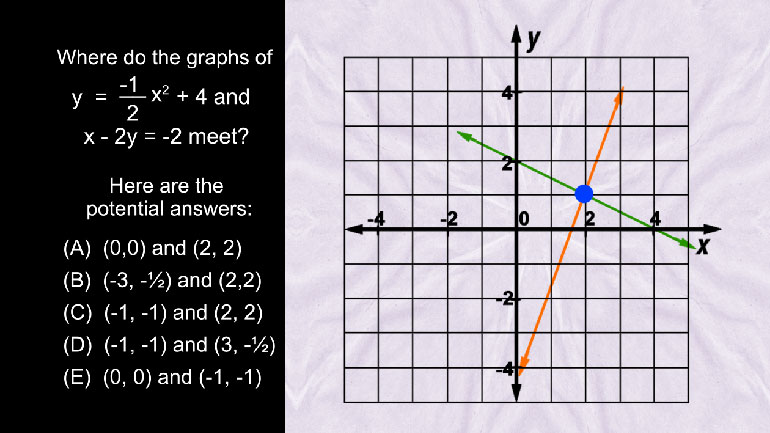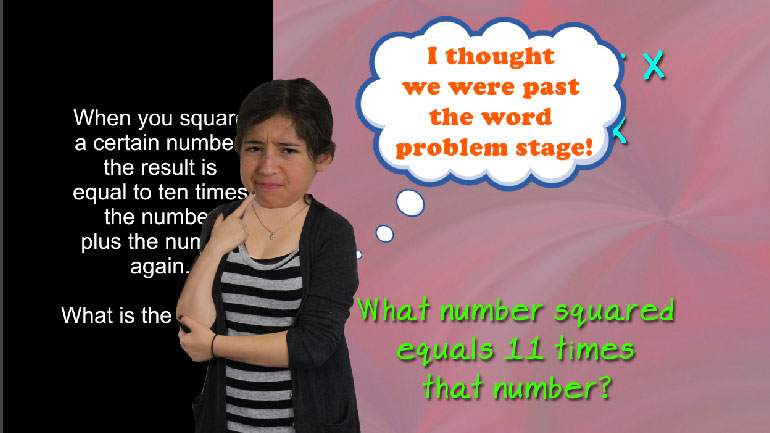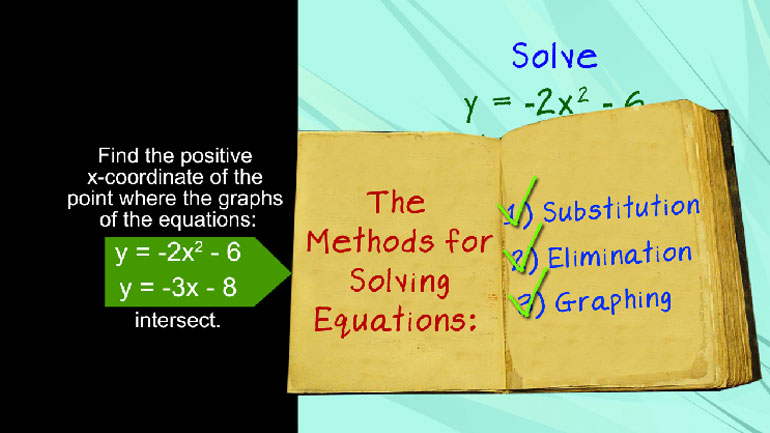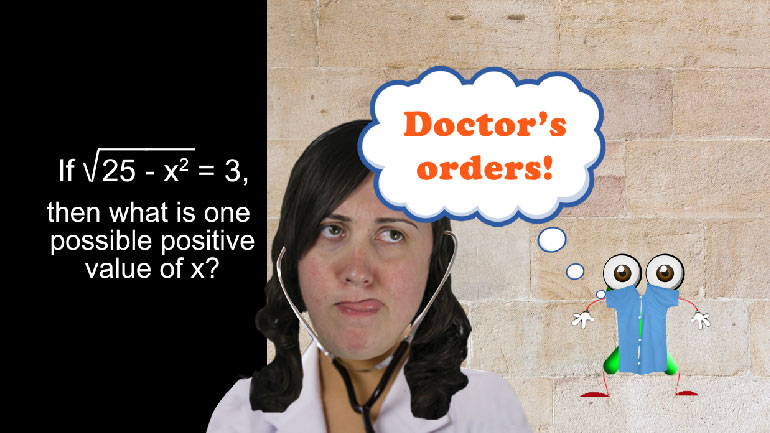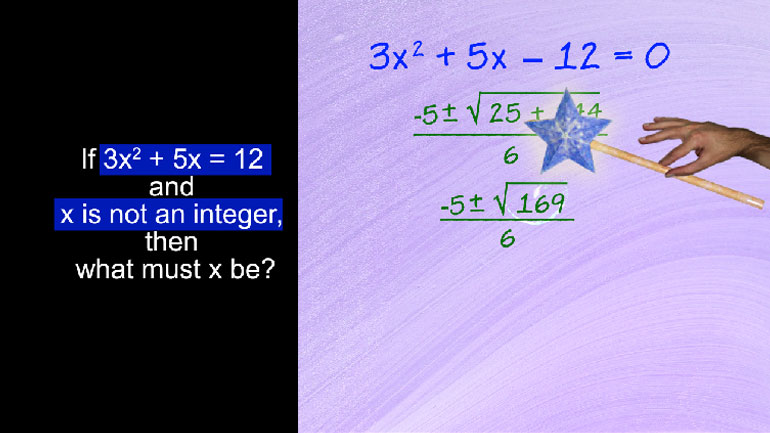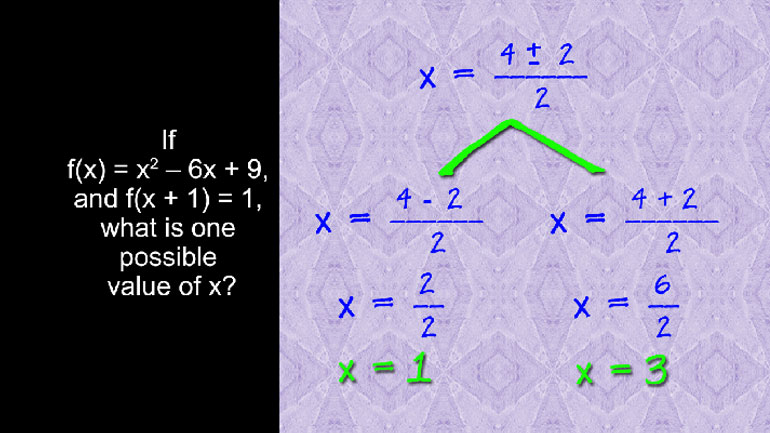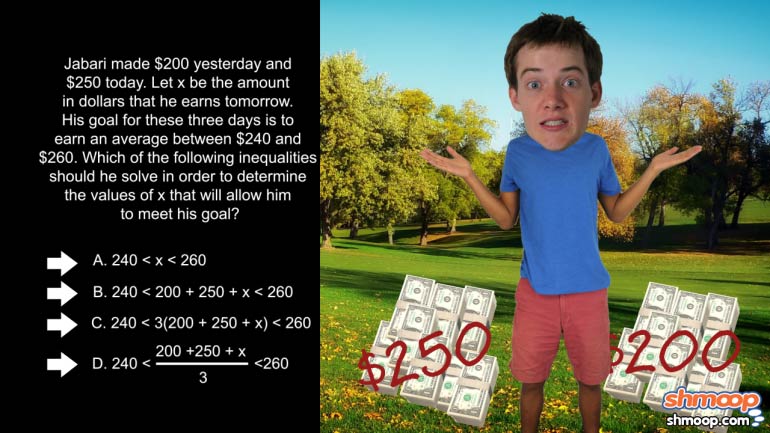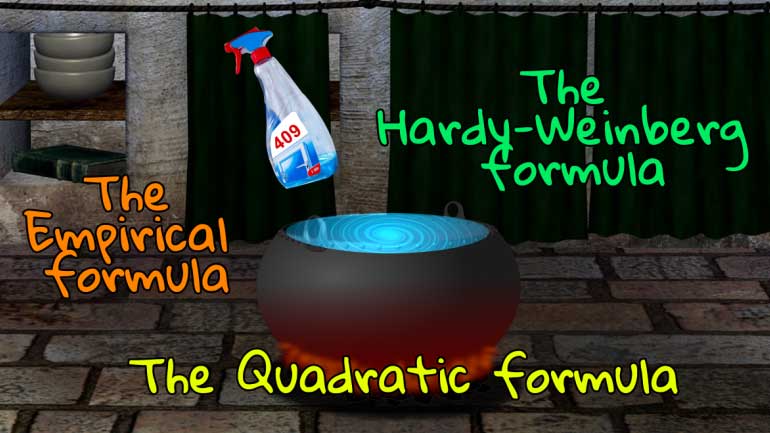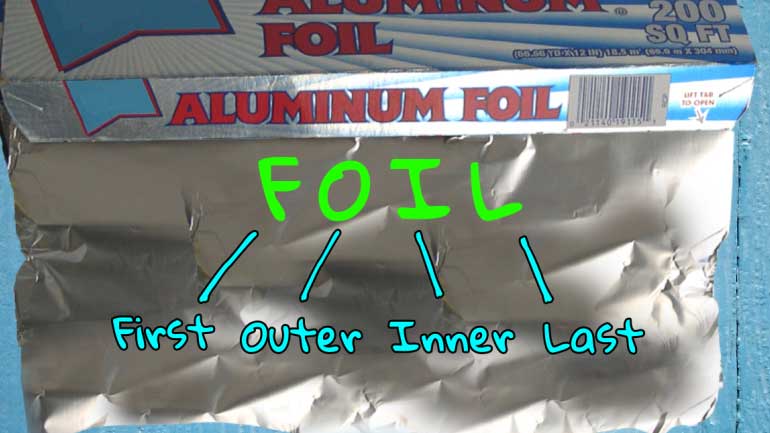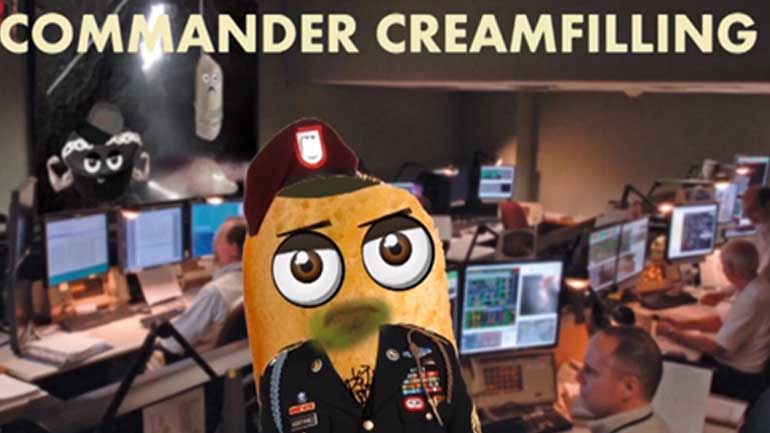ShmoopTube
Where Monty Python meets your 10th grade teacher.
Search Thousands of Shmoop Videos
Solving Quadratic Equations by Factoring 1264 Views
Share It!
Description:
How else would you solve a quadratic equation? Oh, that's right: a zillion other ways.
Transcript
- 00:04
Solving Quadratic Equations by Factoring, a la Shmoop.
- 00:08
Ever since your little brother saw the movie It, he's been terrified of clowns. [young brother watching IT on TV]
- 00:13
So for his eighth birthday party, you decide to get a clown… just to mess with him.
- 00:19
Unfortunately, the guy who shows up is not the creepy clown you were hoping for. [playful clown arrives at the front door]
- 00:23
Instead, he's got the biggest smile you've ever seen.
Full Transcript
- 00:26
However, he also seems really into algebra.
- 00:28
Which is… kinda creepy.
- 00:30
You decide to pursue this angle and see where it goes.
- 00:33
The clown tells you his smile can be modeled by the equation y equals x squared plus 6x [clown describing his smile with an equation]
- 00:39
minus 16.
- 00:41
How wide is the clown’s smile?
- 00:44
This looks like a quadratic equation.
- 00:47
Let's take a look at the equation on a graph. [quadratic equation shown on a graph]
- 00:49
To find the width of the clown's smile in inches, we can calculate the distance between
- 00:54
the x intercepts or roots of the parabola.
- 00:58
The x intercepts are where the parabola crosses the x axis, which means y equals 0.
- 01:04
So let's set y to 0 in our equation. [y set as 0 in the quadratic equation]
- 01:08
0 equals x squared plus 6x minus 16,
- 01:12
To find the x values where y equals 0, we can factor the right side into the form "the [right side of the formula highlighted]
- 01:17
quantity x plus p times the quantity x plus q."
- 01:22
We can use FOIL to multiply this out. [aluminum foil used to multiply the equation]
- 01:26
FOIL stands for First, Outer, Inner, then Last.
- 01:31
So X times X is X-squared, plus…
- 01:35
X times Q is "Q-X", plus…
- 01:38
P times x is "P-X", plus…
- 01:41
P times Q is "PQ".
- 01:45
Since "PX" and "QX" are like terms, we can add them together to make the quantity P plus [PX and QX highlighted as like terms]
- 01:50
Q times X.
- 01:52
Let's look at our original equation to compare.
- 01:55
We can see that P plus Q equals 6 and P times Q equals negative 16.
- 02:01
So first, let's find two numbers that multiply together to give negative 16. [clown combines two question marks together and -16 appears above his head]
- 02:05
Here’s a chart of all the factors of negative 16…
- 02:08
1, negative 16… negative 1, 16…
- 02:10
2, negative 8… negative 2, 8…
- 02:12
4 and negative 4.
- 02:14
We're looking for a "P plus Q" value of 6, which only works for 8 and negative 2.
- 02:21
That means X squared plus 6X minus 16 can be factored to:
- 02:26
x + 8… times…
- 02:28
x – 2 For the equation to equal zero, either X plus
- 02:32
8 or X minus 2 must equal zero.
- 02:35
Which means x = -8 and x = 2 So our parabola goes through the x-axis at [Parabola shown going through the x axis]
- 02:41
points "negative 8, zero" and "2, zero".
- 02:46
How does this relate to the clown's smile?
- 02:48
Well, the width of his smile is the distance between those two points, which is 2 minus [Clown smiles and person uses tape measure to measure the width]
- 02:53
negative 8… or 10 inches.
- 02:55
Okay… you decide this clown is definitely creepy enough for your little brother. [older brother allows clown to enter]
- 02:58
However, your plan backfires.
- 03:00
Instead of turning him off clowns even more…
- 03:03
…your prank turns him ONTO algebra. [clown holding an algebra book for the young brother]
- 03:06
Great job!
- 03:07
He was already the good-looking one.
